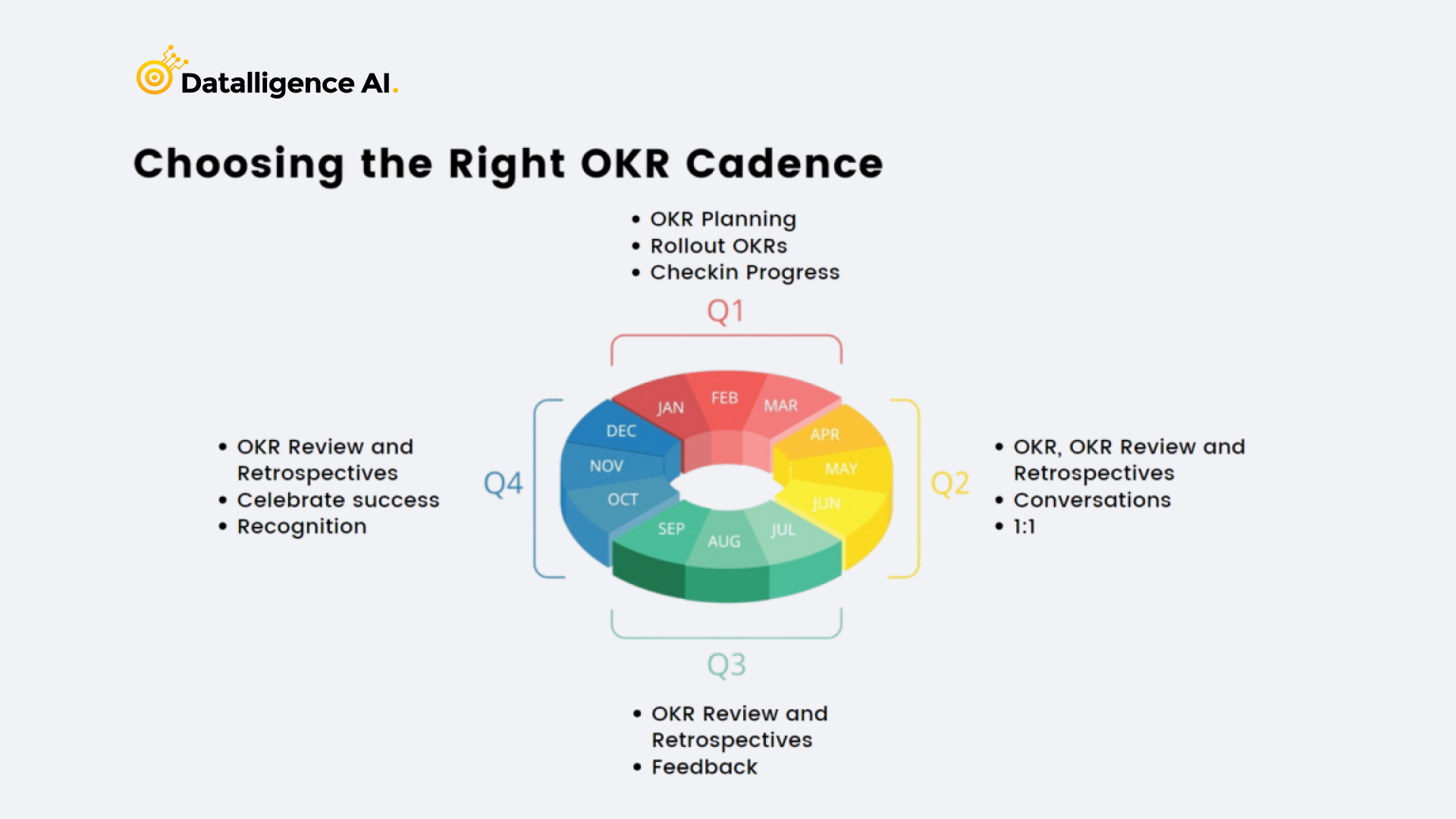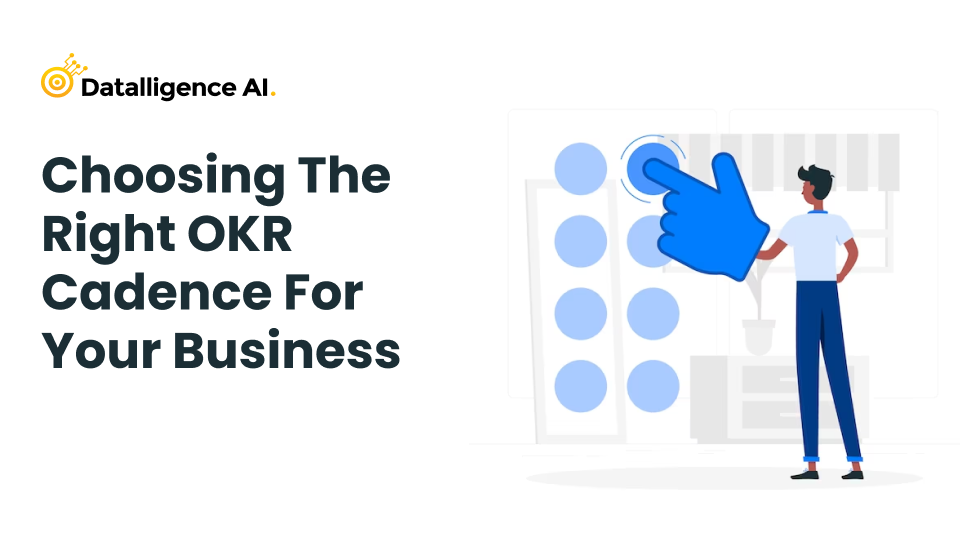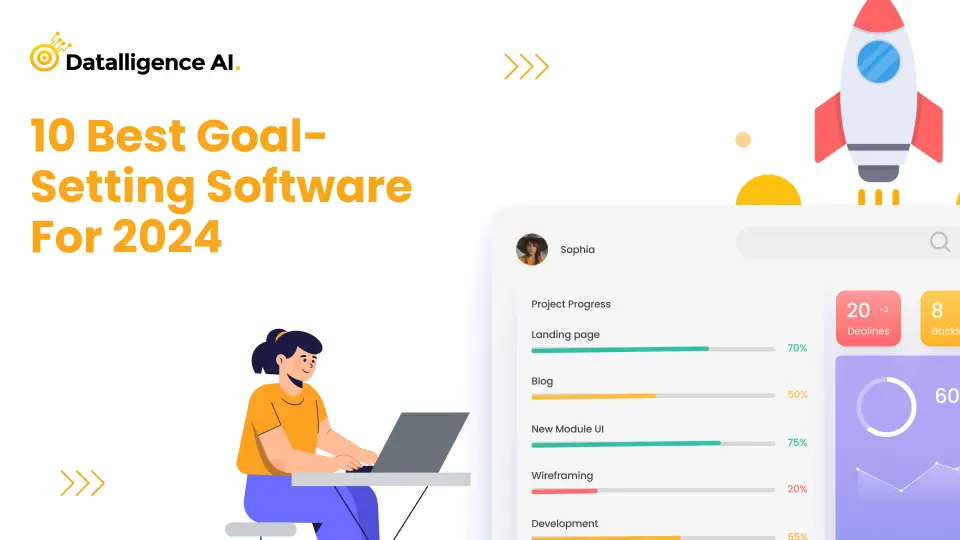Objectives and Key Results (OKRs) is a goal-setting framework that is extensively used by organizations of different types and sizes. This framework provides basic tenets to organizations for creating their own goal structure. Once OKRs are set, they need to be reviewed at regular intervals to monitor the progress. OKR cadence decides on the frequency of review of OKRs. Determining the OKR cadence that works for your business requires a deeper analysis of business type and requirements.
Introduction to OKRs
Objectives and key results are a revised version of the archaic management by objectives methodology. Traditional goal-setting methodologies have been tweaked to bring in transparency, alignment, and objectivity to become OKRs. Leading tech giants like Google and Intel have implemented OKRs in their goal-setting strategy for more flexible and ambitious goal-setting.
Objectives define what the organization wants to achieve, while key results define the success/failure of objectives to which they are assigned to. An example for the objective is “Build a top-notch OKR app for teams in Jira”. An example for key results would be “1-Highest number of active customers in the ecosystem”, 2-1 million objectives graded and closed per quarter.
The OKR framework recommends setting 3-4 objectives at the individual, team, and company levels. The SMART principle is followed for setting objectives. Business goals need to be specific, measurable, actionable, relevant, and time-bound. Further, each objective is assigned 3-4 key results that define the success/failure of the objective. Alignment of objectives at the individual, team, and organizational is the main intent of creating OKRs.
OKR Cadence

OKR cadence is the frequency at which previous OKRs need to be graded and new ones are created. Quarterly cadence is what is followed by most businesses. Cadence must not be too short to be inconsequential, nor should it be too long to make OKRs irrelevant.
Mature OKR implementations understand that different goals are associated with different rhythms. The rate at which tactical goals change is much more than strategic goals. Therefore, strategic goals have a different rhythm and need to have appropriate OKR cadence. Organizations must customize cadences as per their needs.
To have a shorter cadence, organizations must ensure that the OKR developing process must be streamlined. For a team or department the OKR cycle depends on:
- Contribution to organizational goals
- Alignment with other teams
OKR cadence depends on the following variables:
- Stage of business
- Stage of employee (Role)
- Industry dynamics
Deciding on OKR Cadence
Team and individual goals are tactical in nature, while organizational goals are strategic in nature. When it comes to choosing OKR cadence, both these types of goals need to be treated differently. Quarterly OKR cadence works well for tactical goals. Frequent review of tactical goals enables review and adjustment of goals. Weekly check-ins are also advisable for tactical goal review.
Strategic OKRs require a longer time for execution, hence, require longer cadence. A decision on the OKR cadence can be taken based on:
Type and scale of business: Nascent, startup, scale-up, and established business require a different approach towards deciding OKR cadence. For example, a startup still searching for a product-market fit will require high-frequency cycles, whereas an established business might require longer cycles.
Role of employee: employees at junior levels may have initial review cycles widely spaced out.
Market dynamics: industries that are prone to frequent disruptions might require shorter execution cycles.
Conclusion
Deriving the best results from the OKR framework requires analysis of the business type and requirements and clear overall business objectives. The best approach to OKRs is to start with the simple company and team OKRs and add complexities as and when the need arises. Starting with a single OKR cadence reduces the complexity. The incremental rollout, beginning with a simpler model and evolving as you learn is the best approach to setting cadence. Now, you can set ambitious and effective OKRs with OKR software from Datalligence. Try our product for free and you’ll realize how simple and easy OKR goal setting is.










